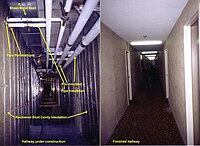
Photo from wikipedia
Amyloid fibrils have garnered increasing attention as viable building blocks for functional material design and synthesis, especially those derived from food and agricultural wastes. Here, amyloid fibrils generated from β-lactoglobulin,… Click to show full abstract
Amyloid fibrils have garnered increasing attention as viable building blocks for functional material design and synthesis, especially those derived from food and agricultural wastes. Here, amyloid fibrils generated from β-lactoglobulin, a by-product from cheese industries, have been successfully used as a template for the design of a new class of high-performance conductive aerogels with sensing properties. These mechanically stable aerogels with three-dimensional porous architecture have a large surface area (≈159 m2 g-1), low density (≈0.044 g cm-3), and high electrical conductivity (≈0.042 S cm-1). A pressure sensing device is developed from these aerogels based on their combined electrical conductivity and compressible properties. More interestingly, these aerogels can be employed to design novel enzyme sensors by exploiting the proteinaceous nature of amyloid fibrils. This study expands the scope of structured amyloid fibrils as scaffolds for in situ polymerization of conducting polymers, offering new opportunities to design materials with multiple functionalities.
Journal Title: Small
Year Published: 2020
Link to full text (if available)
Share on Social Media: Sign Up to like & get
recommendations!